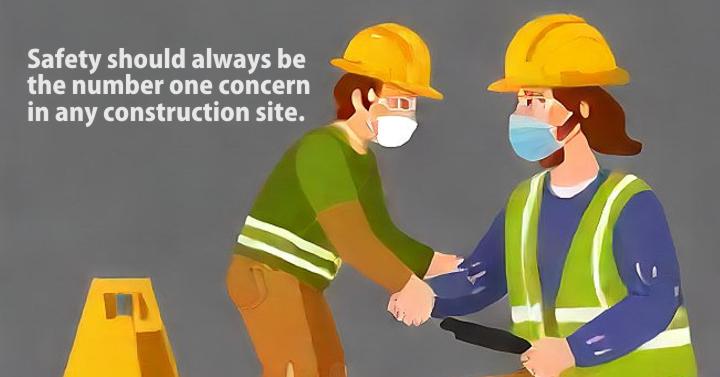As a construction manager with over 25 years of hands-on experience in this field, I have been privileged to oversee numerous successful asphalt pavement projects. From minor repairs to large-scale highway constructions, each project has taught me invaluable lessons that I am excited to share with my colleagues working in the building and construction industry.
In my experience, selecting reflective roofing materials and implementing energy-efficient practices can significantly enhance the overall performance and sustainability of the integrated solar PV and roofing system.
Pre-Construction Planning: Laying the Foundation for Success
Site Assessment and Soil Testing
A detailed site assessment and soil testing are mandatory before breaking ground. To come up with suitable designs and construction techniques which would see stable and long-lasting pavement foundations it is necessary to consider existing conditions, soil composition as well as drainage patterns.
Material Selection and Sourcing
Material selection is a crucial decision with cost implications as well as impacts on the long term performance of a project. Therefore, I will be sharing some insights regarding good quality selection of such factors like aggregate additives , high-quality bituminous mixes among others which depend on factors like traffic loads, environmental conditions and project specifications.
Design Considerations: Striking the Balance Between Performance and Cost
Pavement Thickness and Structural Design
Determining appropriate thicknesses for pavements and structural designs are important design considerations. Among other things, I am going to take you through several aspects including traffic volume, soil types, and the expected lifespan of pavement that affects such decisions.
| Design Parameter | Description | Typical Value Range |
|---|---|---|
| Pavement Thickness | Depth of the asphalt layer(s) | 2 – 12 inches |
| Base Course Thickness | Depth of the underlying base layer(s) | 4 – 12 inches |
| Subgrade Strength | Bearing capacity of the natural soil | CBR 3 – 15 |
| Design Life | Expected lifespan of the pavement | 10 – 40 years |
| Traffic Loading | Anticipated traffic volume and axle loads | ESALs 10^4 – 10^7 |
Drainage and Stormwater Management
In preventing premature failure of pavements and prolonging the lifespan of asphalt surfaces, drainage is crucial. This will include best practices for designing effective drainage systems such as using subsurface drainage layers, recommending slope gradients, stormwater management strategies etc.
Construction Techniques: Ensuring Quality and Efficiency
Subgrade Preparation and Compaction
Subgrade quality forms the basis for any pavement system. The importance of proper subgrade preparation including clearing, grading, and compaction techniques to create a stable base for the asphalt layers will be discussed.
Asphalt Mixing and Placement
This includes topics on selecting paving equipment to optimum asphalt mix temperatures. Thus it can be seen that attention to detail in these critical steps is required to achieve smoothness, durability, and longevity in a pavement build-up.
Compaction and Density Testing
To ensure that the long-term performance of an asphalt pavement is achieved through proper compaction, I am going to share my experience on compaction techniques, and equipment selection among other things; with emphasis placed on making sure that regular density tests are carried out to confirm compliance with specified compactions.
Quality Control and Assurance: Safeguarding Your Investment
Field Testing and Inspections
Regular field testing as well as inspections are very important when it comes to identifying issues during the construction process. Coring, nuclear density testing among others will therefore be mentioned in this section since they are some of the test methods used to confirm if an asphalt pavement meets project specifications.
Documentation and Record-Keeping
To maintain transparency, track progress, and comply with industry standards and regulations, one requires thorough documentation and record-keeping of the projects. I will give some guidelines on best practices for documenting project details, test results and any deviations or changes made during construction.
Safety Considerations: Prioritizing Worker and Public Well-Being
Personal Protective Equipment (PPE)
Safety should always be the number one concern in any construction site. To protect workers from potential hazards such as high temperatures, heavy machinery, exposure to asphalt fumes, etc., I ENCOURAGE the use of correct personal protective equipment (PPE) together with strict safety protocols at all times.

| Safety Measure | Description | Importance |
|---|---|---|
| Hard Hats | Protect against falling objects | Mandatory |
| Safety Glasses | Prevent eye injuries from debris | Mandatory |
| Steel-Toed Boots | Protect feet from crushing hazards | Mandatory |
| Reflective Vests | Enhance visibility for workers | Highly Recommended |
| Respiratory Protection | Filter out asphalt fumes and dust | Highly Recommended |
| Hearing Protection | Reduce exposure to loud machinery noise | Highly Recommended |

Traffic Control and Public Safety
Asphalt pavement construction often involves working in close proximity to vehicular traffic. I’ll provide strategies for implementing effective traffic control measures like signage, barrier systems, and flagging operations that will ensure worker’s safety as well as that of the public.
Environmental Considerations: Building Sustainably
Emissions and Air Quality
Asphalt production and paving operations can contribute to air pollution; thus it becomes necessary to implement measures geared towards reducing emissions while maintaining air quality. For instance, low-emission asphalt mixes can be used; dust control measures implemented or this practice is done within local regulations and best practices which I’ll discuss.
Recycling and Sustainable Practices
The construction industry has a responsibility to minimize environmental impact by embracing sustainability. To this end, I’ll share with you some insights on incorporating recycled materials in asphalt mixes, as well as how to implement waste reduction strategies and explore emerging technologies that can be used in asphalt pavement construction for sustainability purposes.
Cost Management: Optimizing Resources and Budgets
Material and Equipment Costs
The overall project budget is significantly affected by the costs of materials and equipment. In order to maximize efficiency while minimizing expenses, I will guide you through cost-effective material sourcing; choosing the right equipment; and maintenance practices.
| Cost Parameter | Description | Typical Range |
|---|---|---|
| Asphalt Mix | Cost of asphalt binder and aggregates | $60 – $120 per ton |
| Equipment Costs | Rental or ownership costs for machinery | $500 – $2,000 per day |
| Labor Costs | Wages for skilled workers and operators | $30 – $60 per hour |
| Overhead and Markup | Project management, insurance, and profit | 10% – 20% of total costs |
| Contingency | Allowance for unforeseen expenses | 5% – 10% of total costs |
Project Scheduling and Resource Allocation
For a project timeline to be maintained within the set boundaries of time along with controlling costs effectively requires effective project scheduling combined with resource allocation. For example, optimizing crew sizes, equipment utilization rates or material delivery schedules can help increase productivity while reducing delays.
Paving the way to long-lasting high-performance asphalt pavements that stand the test of time calls for a deep understanding of material aspects, design principles, construction techniques as well as best practices in the industry. You will be better prepared to tackle your next asphalt pavement project confidently with this all-inclusive guidebook which offers insights into what works!
Remember that these are fundamental factors that influence a successful paving process regarding attention to detail, commitment to quality,and focus on safety and sustainability. So by adopting these core values, you will be ready to create enduring and top-performing asphalt roads.
I have gained extremely valuable experience from my twenty-five years as a contractor and this is why I am certain of what I am saying. By sharing my knowledge and skills, I hope to be of help to other individuals who are in the same profession as me with an aim of becoming best asphalt pavement constructors.
